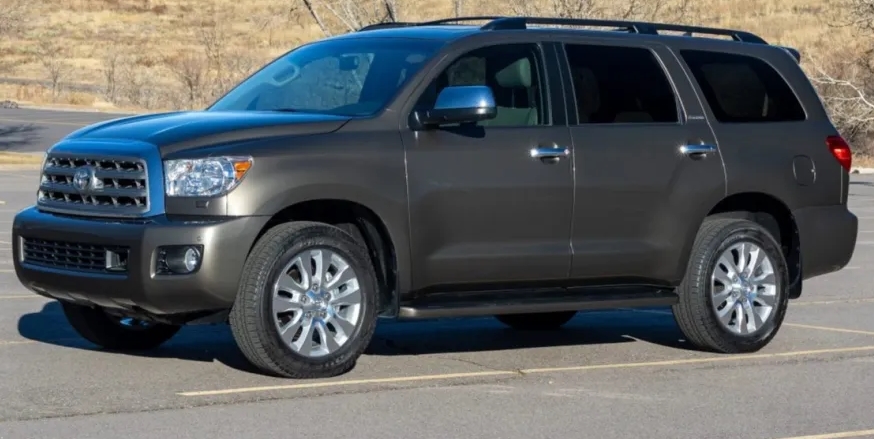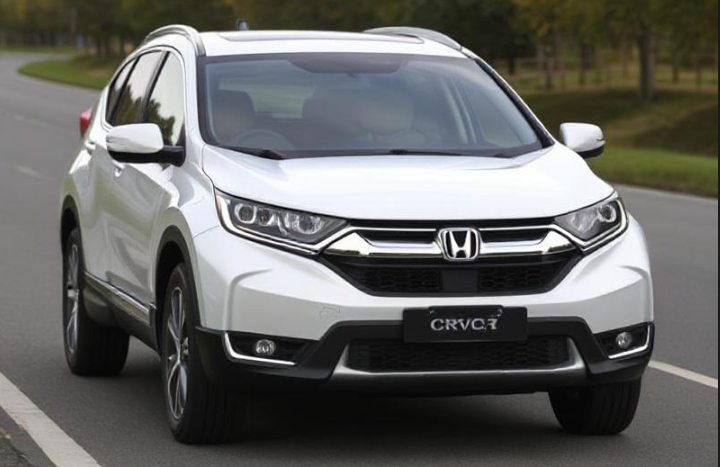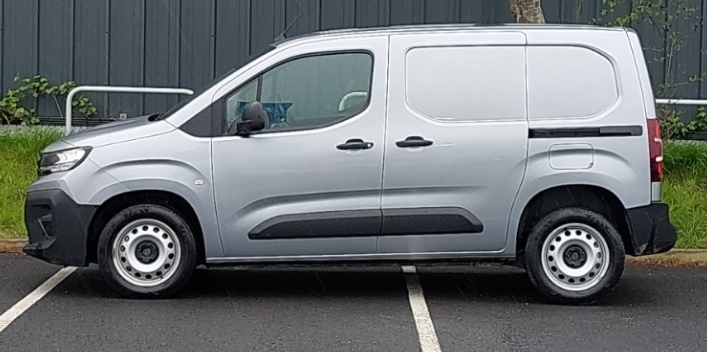The Enduring Giant: A Three-Generation Evolution of the Toyota Sequoia
In the vast and often-boisterous world of full-size, body-on-frame SUVs, a segment long dominated by American titans, the Toyota Sequoia has carved out a unique and formidable legacy. Born from the rugged DNA of the Tundra pickup, the Sequoia has, for over two decades, stood as a testament to Toyota’s core values: unwavering reliability, family-focused utility, and quiet, determined capability. Its evolution from a straightforward contender to a technologically advanced hybrid powerhouse is a story of adaptation, refinement, and an unyielding commitment to building a vehicle that can endure almost anything a family can throw at it.
First Generation (2001-2007): The New Contender
In the late 1990s, Toyota identified a significant gap in its North American lineup. While the 4Runner was a capable mid-size SUV and the Land Cruiser was a legendary but premium off-roader, the brand lacked a true competitor to the Chevrolet Tahoe/Suburban and Ford Expedition. The answer arrived for the 2001 model year: the Toyota Sequoia.
Sharing its robust body-on-frame platform, powertrain, and front-end styling with the recently introduced Tundra pickup, the Sequoia was engineered from the ground up for the American market. It was assembled exclusively at Toyota’s plant in Princeton, Indiana, a clear signal of its intended audience.
Powertrain and Performance: The first-generation Sequoia was powered by a single, formidable engine: the 4.7-liter “i-Force” V8 (2UZ-FE). Initially, this famously smooth and durable engine produced 240 horsepower and 315 lb-ft of torque, paired with a 4-speed automatic transmission. This combination provided ample power for daily driving and confident towing, though it was not the most powerful in its class.
A significant update arrived for the 2005 model year. The 4.7-liter V8 was enhanced with Toyota’s Variable Valve Timing with intelligence (VVT-i) technology. This crucial upgrade boosted output to a more competitive 282 horsepower and 325 lb-ft of torque. To better manage this newfound power, the transmission was upgraded to a 5-speed automatic, improving both acceleration and fuel efficiency. Rear-wheel drive was standard, with a part-time four-wheel-drive system available as an option.
.
NO MORE dead batteries with this:

.
Models and Trim Levels:
Throughout its initial seven-year run, the Sequoia was offered in two straightforward trim levels:
- SR5: The well-equipped base model, the SR5 was far from spartan. It came standard with three rows of seating for up to eight passengers, power windows and locks, keyless entry, cruise control, and a robust set of safety features for the era, including anti-lock brakes and stability control. It was the workhorse of the lineup, aimed at families needing maximum space and utility without an excess of frills.
- Limited: The premium trim, the Limited, elevated the Sequoia into a more luxurious territory. It added features like leather-trimmed upholstery, heated and power-adjustable front seats, a premium JBL sound system, a standard sunroof, automatic climate control, and distinctive alloy wheels. The Limited was for the buyer who wanted Tundra toughness and Land Cruiser-like comfort in one package.
The first generation was lauded for its cavernous and thoughtfully designed interior, excellent build quality, and a ride quality that was more comfortable and composed than many of its leaf-sprung domestic rivals. It quickly earned a reputation for being one of the most reliable large SUVs on the market, setting the foundation for the Sequoia nameplate for years to come.
Second Generation (2008-2022): Bigger, Bolder, and Brute Force
After a successful debut, Toyota unleashed a completely redesigned Sequoia for the 2008 model year. This second generation was a dramatic leap forward in every conceivable metric. It was significantly larger, more powerful, and packed with new technology and features designed to challenge the American competition head-on.
Built on the all-new platform of the second-generation Tundra, the new Sequoia boasted a muscular, imposing design. A key engineering hallmark was its four-wheel independent suspension, a feature that set it apart from its solid-axle competitors and endowed it with a superior ride quality and more third-row legroom.
Powertrain and Performance: This generation saw a major diversification in powertrain options. For the first few years (2008-2012), the trusted 4.7-liter V8 carried over as the base engine, now making 276 horsepower.
The big news, however, was the optional—and soon to be standard—5.7-liter “i-Force” V8 (3UR-FE). This powerhouse engine was a game-changer, producing a mighty 381 horsepower and 401 lb-ft of torque. Mated to a new 6-speed automatic transmission, this V8 transformed the Sequoia into a towing champion, capable of pulling over 7,000 pounds with ease, and gave it surprisingly brisk acceleration for a vehicle of its size. By 2013, the 4.7-liter V8 was discontinued, and the venerable 5.7-liter V8 became the sole engine for the remainder of the generation’s long life.
Models and Trim Levels:
The second generation saw a significant expansion of the trim lineup, catering to a wider range of buyers:
- SR5: Remaining the entry-point, the new SR5 was even better equipped, featuring standard tri-zone climate control, a power-retractable rear window (a Sequoia signature), and seating for eight. It continued to be the value-oriented choice for large families.
- Limited: The Limited trim continued its upmarket push, adding 20-inch alloy wheels, a power liftgate, parking sensors, heated leather seats, and an upgraded JBL audio system. It represented the sweet spot for buyers seeking a blend of luxury and utility.
- Platinum: A new, top-tier luxury trim, the Platinum, was introduced to compete with the likes of the GMC Denali. It came standard with nearly every available feature, including heated and ventilated front seats, second-row captain’s chairs (reducing seating to seven), a rear-seat DVD entertainment system, adaptive cruise control, and an exclusive Adaptive Variable Suspension with load-leveling air springs at the rear.
Mid-Generation Evolution: Given its remarkable 15-year production run, the second generation saw several key updates:
- TRD Sport (2018-2022): Aimed at buyers wanting a more aggressive, street-focused look, the TRD Sport package was added. It featured unique 20-inch black wheels, a sport-tuned suspension with Bilstein shock absorbers, TRD anti-sway bars, and a model-specific grille and badging.
- TRD Pro (2020-2022): The ultimate off-road Sequoia arrived in 2020. The TRD Pro was a factory-built trail machine, equipped with heavy-duty Fox internal bypass shocks, a front skid plate, Rigid Industries LED fog lights, forged 17-inch BBS wheels with all-terrain tires, and the iconic “TOYOTA” heritage grille.
- Nightshade Special Edition (2021-2022): Capitalizing on the “blackout” trend, the Nightshade edition, based on the Limited trim, offered black leather seating and aggressive darkened chrome and black exterior accents on the grille, mirror caps, door handles, and badging.
While its powertrain and chassis remained fundamentally unchanged, later models received updated infotainment systems and the gradual inclusion of Toyota Safety Sense driver-assistance features. By the end of its run, the second-generation Sequoia was celebrated for its bulletproof reliability and immense capability, but it was also showing its age in terms of interior design and fuel economy.
Third Generation (2023-Present): A Hybrid Revolution
For the 2023 model year, the Toyota Sequoia was reborn. The third generation represents the most radical and technologically advanced transformation in the vehicle’s history. Riding on the new TNGA-F global body-on-frame platform shared with the Tundra, Land Cruiser, and Lexus LX 600, the new Sequoia is stronger, more efficient, and packed with cutting-edge technology.
The most profound change lies under the hood. The thirsty-but-loved V8 is gone. In its place is a single, state-of-the-art powertrain for the entire lineup.
Powertrain and Performance: Every 2023 and newer Sequoia is powered by the i-FORCE MAX hybrid system. This advanced setup pairs a 3.5-liter twin-turbocharged V6 engine with an electric motor-generator ingeniously packaged between the engine and the 10-speed automatic transmission. The combined system output is a staggering 437 horsepower and 583 lb-ft of torque. This powertrain not only delivers superior power and torque compared to the outgoing V8 but also provides significantly improved fuel economy and a massive boost in towing capacity, now up to 9,520 pounds. In a fundamental shift, the rear suspension moves from the previous independent setup to a more robust multi-link solid rear axle, optimized for towing stability and durability.
Models and Trim Levels:
The trim structure was completely revamped to reflect the model’s modern positioning:
- SR5: The new base model comes standard with the i-FORCE MAX powertrain, Toyota Safety Sense 2.5, a panoramic view monitor, and a large touchscreen infotainment system. An available TRD Sport package enhances its on-road dynamics.
- Limited: Building on the SR5, the Limited adds SofTex-trimmed seats, heated and ventilated front seats, a massive 14-inch Toyota Audio Multimedia touchscreen, and power-folding third-row seats.
- Platinum: This luxury-focused trim includes premium features like heated and ventilated seats for the first two rows, 10-way power-adjustable front seats, second-row captain’s chairs, a panoramic sunroof, and a premium JBL audio system.
- TRD Pro: The off-road king returns, now with the hybrid powertrain’s immense low-end torque. It retains its core mission with FOX internal bypass shocks, a TRD Pro-specific front stabilizer bar, a thick aluminum skid plate, a selectable locking rear differential, and Multi-Terrain Select with Crawl Control.
- Capstone: A new pinnacle of luxury, the Capstone trim elevates the Sequoia to flagship status. It boasts exclusive features like 22-inch dark chrome wheels, semi-aniline leather-trimmed seats in a unique black-and-white color scheme, authentic American Walnut wood-grain interior trim, acoustic laminated glass for a quieter cabin, and power-running boards.
From its straightforward beginnings as a reliable family hauler to its current status as a sophisticated hybrid powerhouse, the Toyota Sequoia has consistently evolved to meet the demands of its drivers. While its core mission—to safely and reliably transport families and their gear—has never wavered, its journey through three distinct generations showcases a remarkable capacity for change, proving that even a giant can learn new tricks.







